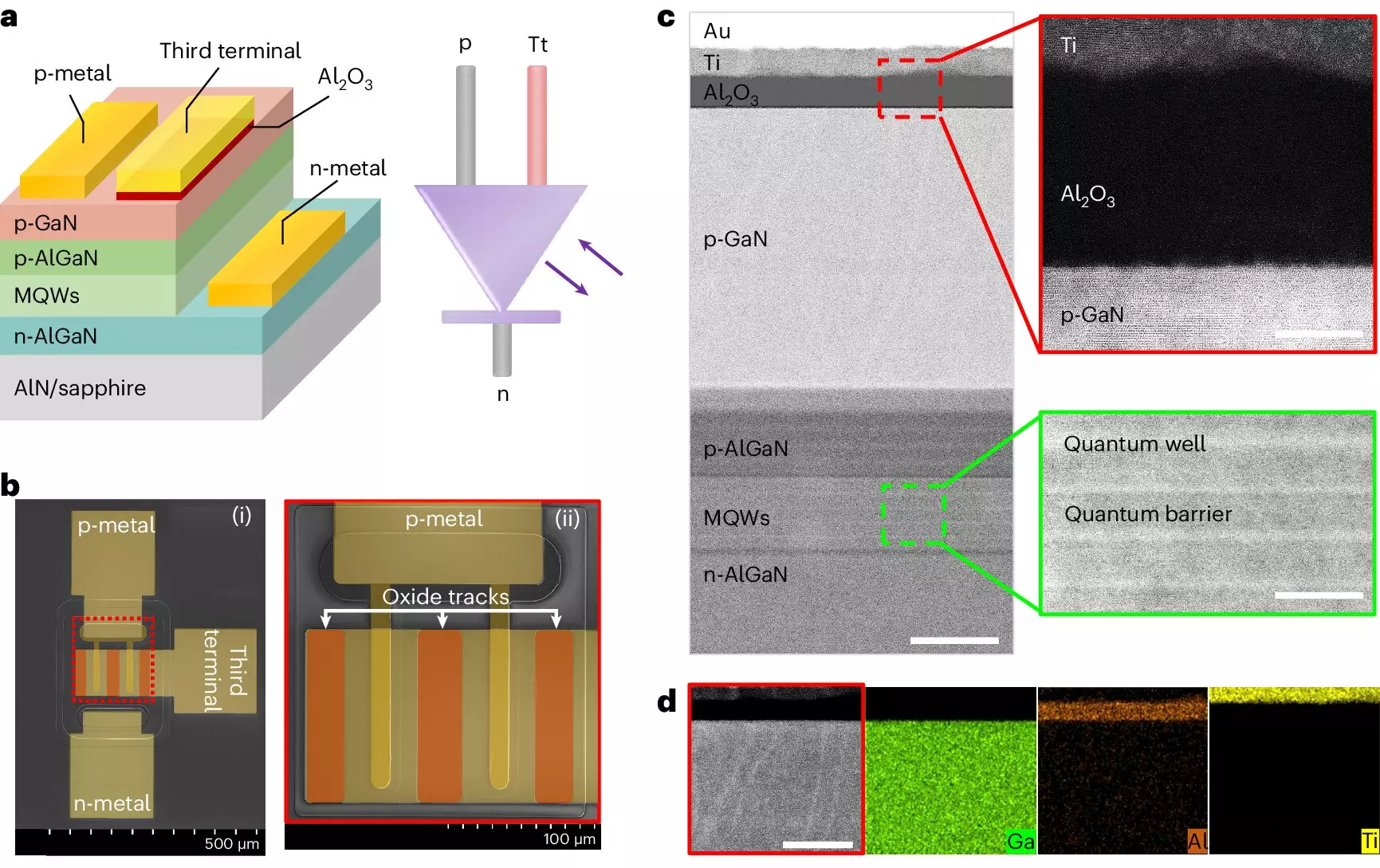The development of optoelectronic devices has been revolutionized by the recent breakthrough in three-terminal diodes by researchers at the University of Science and Technology of China (USTC). Led by Prof. Haiding Sun, the team at the iGAN Laboratory has successfully designed a diode that can both emit and detect light, pushing the boundaries of traditional two-terminal devices. This innovation opens up new possibilities for highly performing wireless communication and light-driven computing systems.
The three-terminal diode developed by Sun and his team combines a traditional gallium nitride-based p–n diode with a newly introduced third terminal. This third terminal, consisting of a metal/Al2O3 dielectric layer directly applied to the p–GaN layer, allows for enhanced functionality and performance. By modulating the light intensity through adjusting the bias applied to the third terminal, the device can significantly increase the modulation bandwidth. Additionally, when functioning as a photodetector, the device utilizes both voltage and incident light as inputs to establish reconfigurable NAND and NOR optoelectronic logic gates, showcasing its versatility.
The new three-terminal diode has shown promising results in enhancing modulation bandwidth by more than 64% compared to current OWC systems. This substantial improvement opens up opportunities for faster, more efficient, and reliable data transmission methods. The ability to seamlessly switch between emitter and detector modes provides a dual-functional device architecture that can be adapted to other semiconductor platforms. This paves the way for the development of multifunctional and integrated electronic and optoelectronic systems, such as integrated photonics.
The diode developed by the USTC research team holds great promise for the future of optoelectronic devices. It could potentially be used to fabricate OWC technology that can transmit data at higher speeds and drive innovative optically driven computing systems. As Prof. Haiding Sun and his colleagues continue to explore the potential of their diode, future studies will focus on refining its performance and integrating it with other optoelectronic materials and systems. This ongoing research aims to further enhance the capabilities of the three-terminal diode and expand its applications in the field of optoelectronics.
The breakthrough in three-terminal diodes represents a significant advancement in the field of optoelectronic devices. The innovative design and functionality of these diodes have the potential to revolutionize wireless communication and computing systems. With further research and development, these devices could lead to faster, more efficient data transmission methods and drive the evolution of optoelectronic technologies.


Leave a Reply